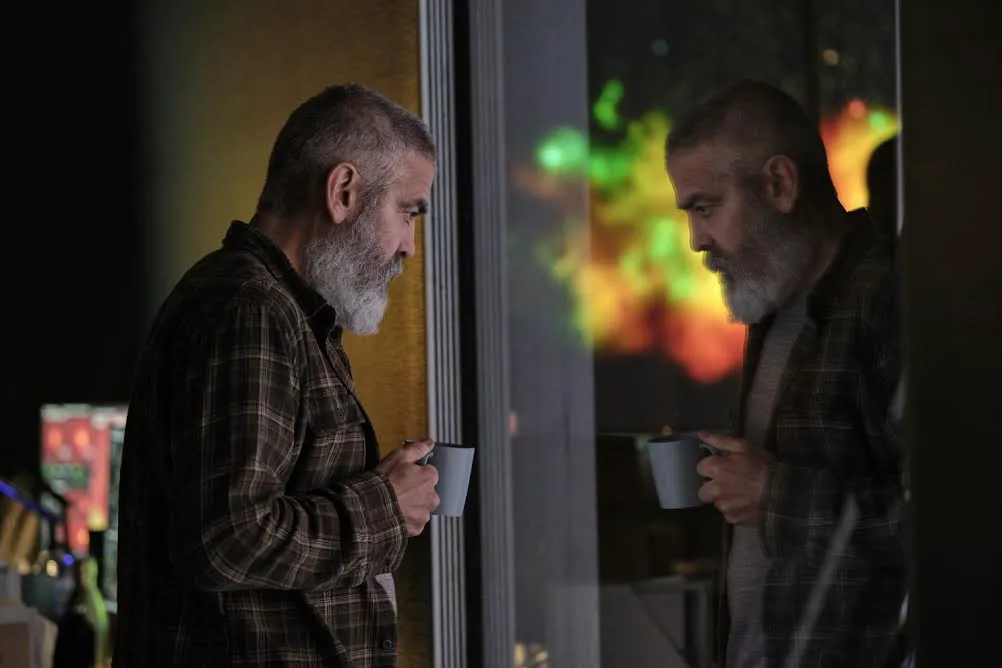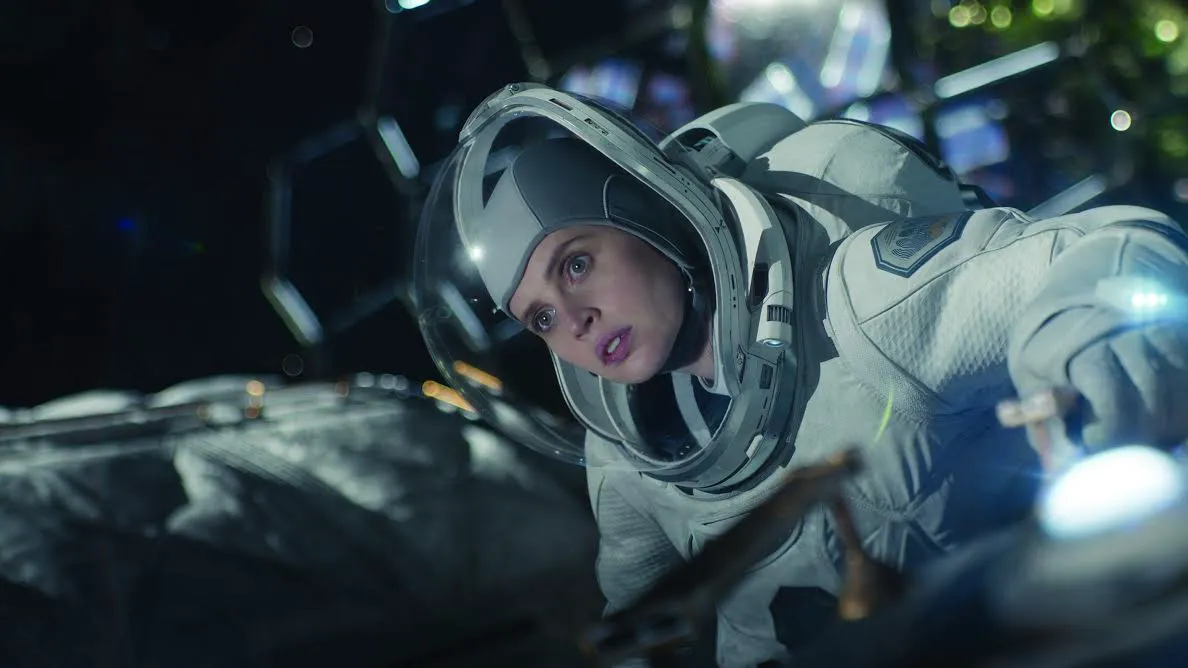The Midnight Sky: A Chronicle of Loss and Redemption
Augustine (played by George Clooney), a scientist who has dedicated his life to studying distant worlds, finds his research becoming critically important. As Earth faces a global catastrophe, his data becomes the key to guiding astronauts on a mission to find a new habitable planet. Augustine, however, remains behind in an Arctic research station, succumbing to a terminal illness. As the atmosphere turns toxic, wiping out life on Earth, he wanders the desolate base like a ghost. Amidst the chaos, one spacecraft perseveres, its crew unknowingly approaching a devastated home, ready to share their findings. Their fate now rests on Augustine, who must desperately contact the ship and prevent their return.

George Clooney as Augustine in “The Midnight Sky”
Clooney chooses a grand, fantastical setting of distant planets, vast cosmos, and Arctic stations to explore themes of career ambitions and family. This echoes films like James Gray’s “Ad Astra,” which also delves into self-discovery, lost opportunities, and complex family relationships. Both films use science fiction to explore personal themes, ultimately touching on universal truths that defy rational understanding. However, “Ad Astra” was a post-ironic space epic, blending poignant monologues about a successful astronaut’s sacrifices with scenes of pirate chases and rogue primates. It was a mix of Homeric odyssey, psychoanalysis, and pulp fiction.

Felicity Jones as Sully in “The Midnight Sky”
“The Midnight Sky,” directed by George Clooney, extracts elements from both the introspective and action-oriented aspects of these influences. Despite being based on Lily Brooks-Dalton’s novel, the film feels dramatically unoriginal. Augustine’s dialogue often feels like an explicit narration of subtext, backstory, or even explanations of events that just occurred. It lacks ambition, feeling like an adaptation of a dictionary of clichés. Clooney’s character spends his final days at the research station and unexpectedly finds a young girl named Iris. She becomes both a burden and a catalyst for flashbacks about his past, revealing a pivotal moment when he chose work over family. Meanwhile, the spaceship crew grapples with their own emotional turmoil, longing for home, unaware that Earth is no longer waiting for them.
A Race Against Time
The two parallel storylines, initially confined to the ship and the Arctic station, gradually transition from intimate to blockbuster spectacle. Augustine and Iris brave treacherous ice to contact the astronauts, while the crew struggles to repair their ship and survive a barrage of space debris. However, even this attempt to inject action into the story feels strained. The science fiction genre has evolved too far to be saved by a few action sequences, especially when they are executed with a detached, mechanical precision. If Christopher Nolan hadn’t directed “Interstellar,” it might have resembled “The Midnight Sky” – schematic and, dare I say, soulless, especially for a film that aims to explore love and emotions.
Clooney’s Trajectory
George Clooney’s directorial career, which began promisingly with “Confessions of a Dangerous Mind” and included the moderately successful “The Monuments Men,” has seen a decline in recent years with the critically panned “Suburbicon” and the unsuccessful “The Midnight Sky.” It seems that neither reflections on work and life nor galactic scales can overcome the pervasive sense of cosmic melancholy.